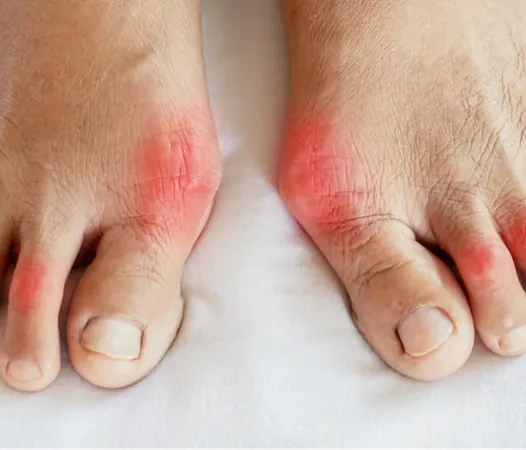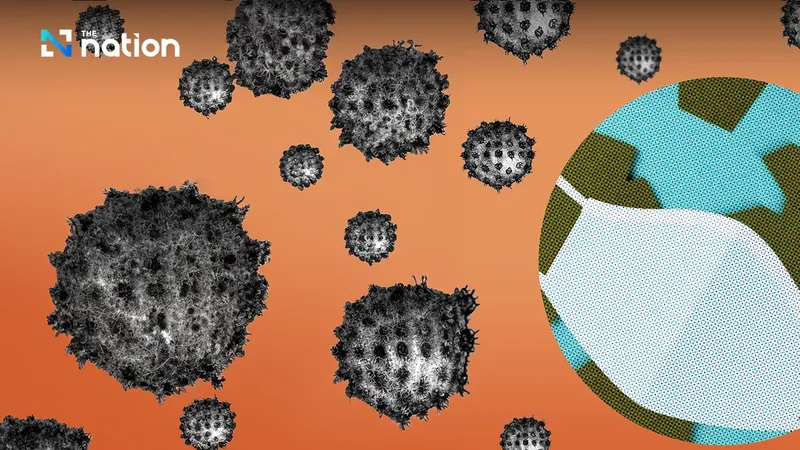
Unlocking the Secret to Preventing Gout: The Revolutionary Lipid Accumulation Product
2025-05-26
Author: Nur
A Game-Changer in Gout Prediction
Exciting new research has unveiled the Lipid Accumulation Product (LAP) as a powerful predictor of hyperuricemia and gout risk, paving the way for innovative prevention strategies!
Beyond Traditional Measurements
While traditional metrics like Body Mass Index (BMI) and Waist Circumference (WC) are commonly used to assess obesity, they often fall short of capturing the full spectrum of body fat and its health impacts. The LAP, which combines waist measurement with fasting triglyceride levels, emerges as a cutting-edge alternative that increases accuracy in obesity assessments and sheds light on potential cardiovascular diseases and metabolic disorders.
Digging Into the Data
The research, led by Dexian Xian and his team from Shandong University of Traditional Chinese Medicine, analyzed data from 10,871 participants of the National Health and Nutrition Examination Survey spanning 2009 to 2018. Each participant self-reported their gout status, and laboratory tests helped measure hyperuricemia. The researchers employed sophisticated statistical methods to understand the connection between LAP levels and gout/hyperuricemia.
Staggering Findings
The study revealed that 20.9% of participants faced hyperuricemia, with 5.57% diagnosed with gout. Astonishingly, those in the highest LAP quartile had a staggering 271% increased risk of hyperuricemia compared to those in the lowest quartile. This implies a critical link between elevated LAP and the development of these conditions.
Implications for Early Detection
Xian’s team concluded that LAP could serve as a vital dynamic index for detecting gout and hyperuricemia, allowing healthcare professionals to pinpoint high-risk individuals and implement early interventions. However, they caution that while the correlation is significant, further research is needed to uncover the underlying biological mechanisms linking LAP to these conditions and to determine whether regulating LAP can effectively reduce gout incidence.
Challenges Ahead
Despite these promising findings, the researchers acknowledged the limitations of their study, particularly its reliance on cross-sectional data from the NHANES database. They emphasize that further research, ideally involving randomized controlled trials, is crucial to establish a causal relationship. Additionally, reliance on self-reported gout status may introduce retrospective bias.
The Future of Gout Prevention
With the potential of LAP to reshape how we approach gout and hyperuricemia prevention, the future looks promising. Stay tuned as researchers delve deeper into this groundbreaking connection, offering hope for millions looking for effective ways to combat these painful conditions!



 Brasil (PT)
Brasil (PT)
 Canada (EN)
Canada (EN)
 Chile (ES)
Chile (ES)
 Česko (CS)
Česko (CS)
 대한민국 (KO)
대한민국 (KO)
 España (ES)
España (ES)
 France (FR)
France (FR)
 Hong Kong (EN)
Hong Kong (EN)
 Italia (IT)
Italia (IT)
 日本 (JA)
日本 (JA)
 Magyarország (HU)
Magyarország (HU)
 Norge (NO)
Norge (NO)
 Polska (PL)
Polska (PL)
 Schweiz (DE)
Schweiz (DE)
 Singapore (EN)
Singapore (EN)
 Sverige (SV)
Sverige (SV)
 Suomi (FI)
Suomi (FI)
 Türkiye (TR)
Türkiye (TR)
 الإمارات العربية المتحدة (AR)
الإمارات العربية المتحدة (AR)